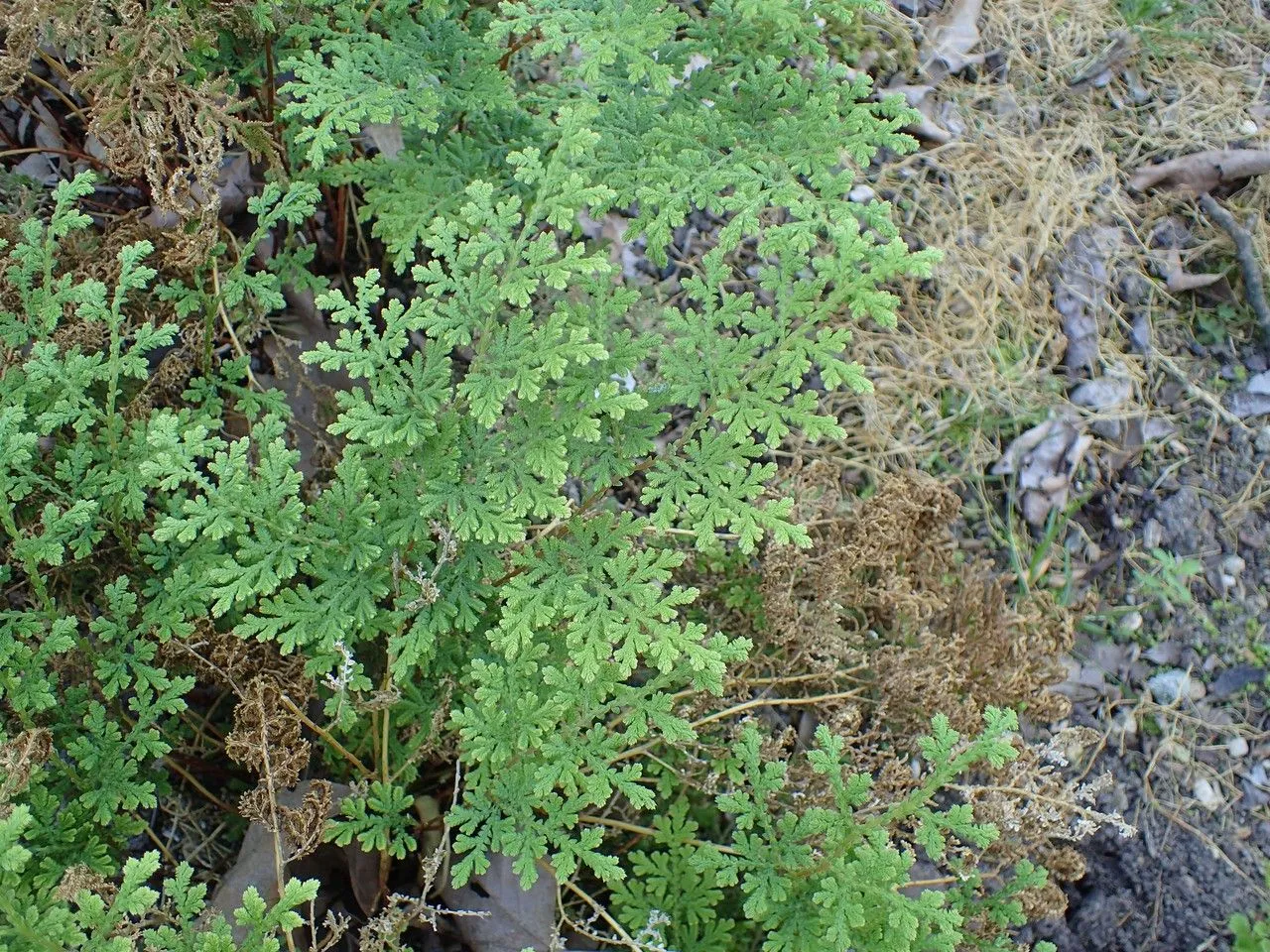
Author: (P.Beauv.) Spring
Bibliography: Bull. Acad. Roy. Sci. Bruxelles 10(1): 136 (1843)
Year: 1843
Status: accepted
Rank: species
Genus: Selaginella
Vegetable: False
Observations: Russian Far East to C. & S. Malesia
Little-club-moss, scientifically known as Selaginella tamariscina, is a compelling member of the Selaginellaceae family. This plant, first described in Bulletin de l’Académie Royale des Sciences de Bruxelles in 1843 by Spring (based on the initial identification by P. Beauv.), is renowned for its distinctive and intriguing morphology.
Selaginella tamariscina is a creeping, perennial species of club moss that can be spotted across a wide geographic range, from the Russian Far East to Central and Southern Malesia. This adaptability to various climates and terrains speaks to the plant’s resilience and hardiness. Generally, it thrives in shaded, moist environments, often found in forested areas, on rocky substrates, and sometimes even on damp soil.
A key feature of this plant is its finely divided, leaf-like structures, closely resembling those of true mosses, thus earning its common name, Little-club-moss. Despite its moss-like appearance, Selaginella tamariscina is a vascular plant with a lineage that dates back hundreds of millions of years, reflecting an ancient lineage within the plant kingdom.
This species displays a fascinating survival strategy by curling its fronds inward during dry conditions to prevent water loss, effectively entering a state of dormancy. When rehydrated, it rejuvenates and unfurls back to its vibrant, green state, a dramatic transformation that underscores the plant’s remarkable adaptability. This behavior lends itself to comparisons with “resurrection plants,” which are known for their ability to survive extended periods of desiccation.
Given its broad distribution and distinctive physiological characteristics, Little-club-moss not only plays a significant role in its native ecosystems but also attracts the interest of botanists and horticulturists alike. Whether studied for its evolutionary significance, admired for its unique resilience, or cultivated for its ornamental value, Selaginella tamariscina remains an intriguing subject in the botanical world.
Eng: little-club-moss
En: Little-club-moss
Taken Jun 18, 2017 by Yoan MARTIN (cc-by-sa)
Taken May 5, 2017 by Pierre Bonnet (cc-by-sa)
Taken Jan 16, 2022 by plant gal (cc-by-sa)
Taken Jan 7, 2022 by Rafael (cc-by-sa)
Taken Jan 15, 2022 by Afroj anam (cc-by-sa)
Taken Jun 18, 2017 by Yoan MARTIN (cc-by-sa)
Taken May 5, 2017 by Pierre Bonnet (cc-by-sa)
Taken May 5, 2017 by Pierre Bonnet (cc-by-sa)
Taken May 5, 2017 by Pierre Bonnet (cc-by-sa)
Taken May 5, 2017 by Pierre Bonnet (cc-by-sa)
© copyright of the Board of Trustees of the Royal Botanic Gardens, Kew.
© copyright of the Board of Trustees of the Royal Botanic Gardens, Kew.
© copyright of the Board of Trustees of the Royal Botanic Gardens, Kew.
Taken Jun 18, 2017 by Yoan MARTIN (cc-by-sa)
Taken Jun 18, 2017 by Yoan MARTIN (cc-by-sa)
Taken May 5, 2017 by Pierre Bonnet (cc-by-sa)
Family: Myrtaceae Author: (F.Muell.) K.D.Hill & L.A.S.Johnson Bibliography: Telopea 6: 402 (1995) Year: 1995 Status:…
Family: Rubiaceae Author: Pierre ex A.Froehner Bibliography: Notizbl. Bot. Gart. Berlin-Dahlem 1: 237 (1897) Year:…
Family: Sapindaceae Author: Koidz. Bibliography: J. Coll. Sci. Imp. Univ. Tokyo 32(1): 38 (1911) Year:…
Family: Asteraceae Author: A.Gray Bibliography: Pacif. Railr. Rep.: 107 (1857) Year: 1857 Status: accepted Rank:…
Family: Fabaceae Author: Medik. Bibliography: Vorles. Churpfälz. Phys.-Ökon. Ges. 2: 398 (1787) Year: 1787 Status:…
Family: Aspleniaceae Author: (Cav.) Alston Bibliography: Bull. Misc. Inform. Kew 1932: 309 (1932) Year: 1932…